[COP Special 2] Protecting the Earth through Sustainable Forest Management: DRC Forest Conservation Project
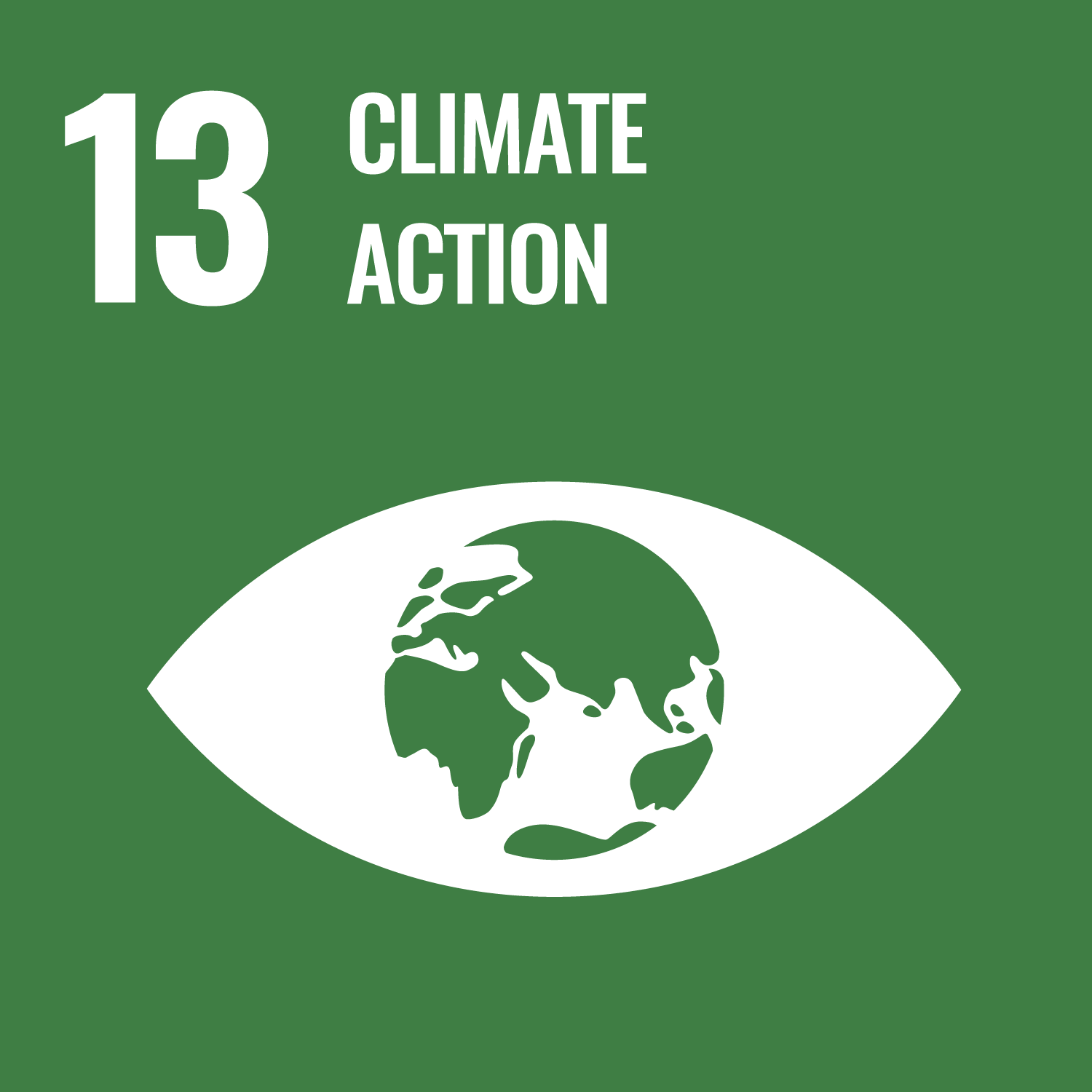
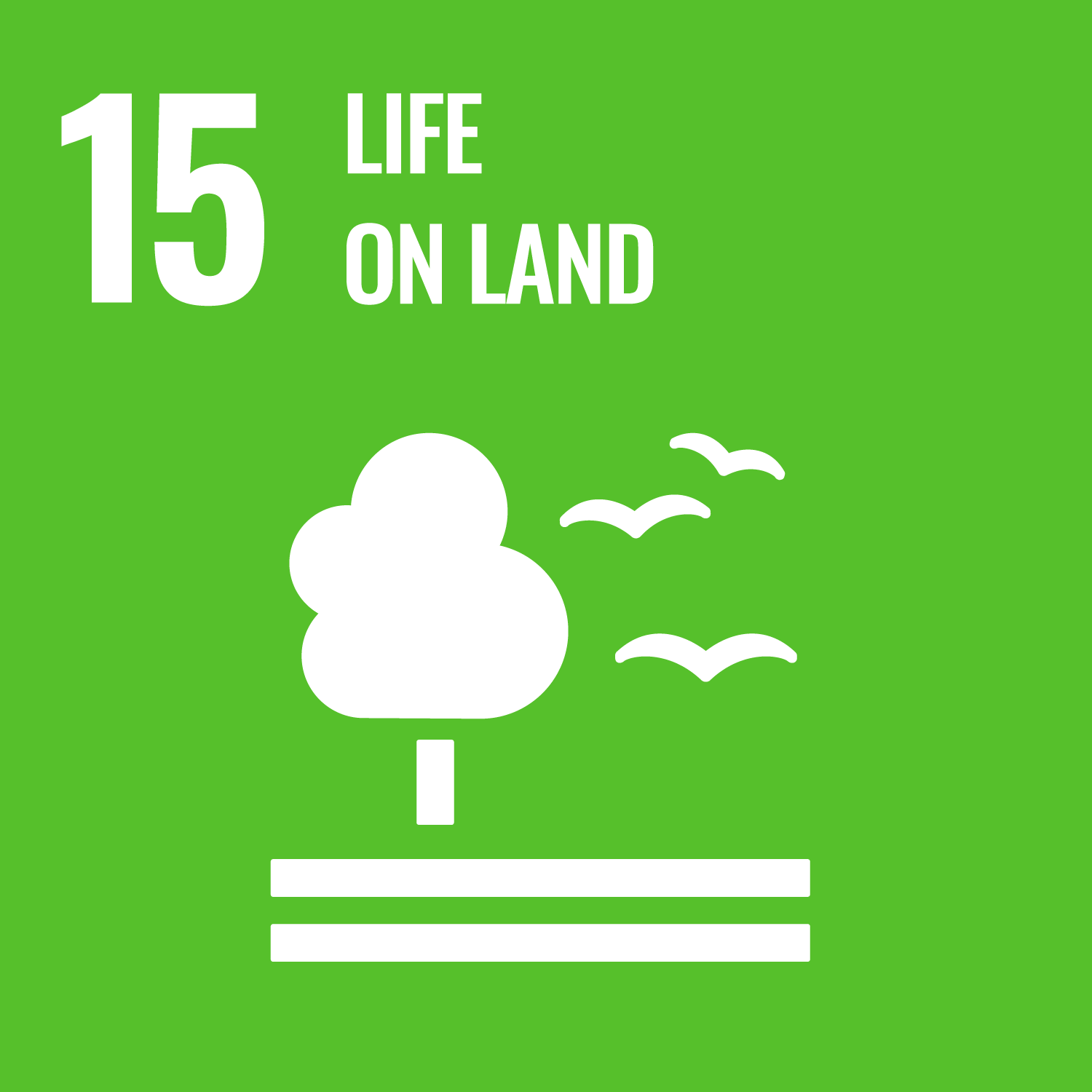
2023.11.29
COP28, the 28th Conference of the Parties to the United Nations Framework Convention on Climate Change, will be held in the United Arab Emirates from November 30 to December 12. On the occasion of this conference, we are publishing a two-part series that focuses on JICA’s cooperation on climate action. This second and final article is about a forest conservation project in the Democratic Republic of the Congo (DRC), a country with the second largest tropical forest area in the world. It is a sustainable forest management initiative that is meant to contribute to climate action and the conservation of biodiversity.

The average global monthly temperature reached a record high in July 2023. This record was set as climate change has become an urgent issue on a global scale, with UN Secretary General António Guterres warning that “the era of global warming has ended, and the era of global boiling has arrived.” In addition to the use of fossil fuels, deforestation has also been identified as a cause of climate change.
Forests play a necessary role in regulating the circulation of oxygen and carbon by absorbing some of the carbon dioxide (CO2) in the atmosphere. Tropical forests, with their warm and humid conditions, are particularly good at storing large amounts of carbon along with their photosynthesis activity throughout the year. The deforestation of tropical forests contributes to global warming by releasing the carbon that was stored in the trees and the soil into the atmosphere. Some 13 to 21 percent of global greenhouse gas emissions are believed to be caused by the release of greenhouse gases from deforestation(*). Climate action includes the very important measure of stopping deforestation. There are expectations as well that the regeneration of natural ecosystems (including tree planting as a means of increasing greenhouse gas absorption from the atmosphere) will also contribute to this.
The Congo Basin (which stretches across the DRC, the Republic of the Congo, Cameroon, and Gabon), is located in the Congo River Basin in central Africa. It is the second largest area of tropical forest in the world after the Amazon rainforest, accounting for 90 percent of the continent’s tropical forests. In the DRC, an increasing amount of forest is lost every year due to deforestation for farmland and charcoal. About 6.3 million ha of tropical forest (equal to approximately 17 percent of Japan’s land area) has disappeared in the 20 years since 2002. Since 2014 in particular, there has been an annual reduction of over 450,000 ha of tropical forest.
The conservation of the tropical forests of the Congo Basin, known as the “Lungs of the Earth,” with its biodiversity and habitat for rare animals such as bonobos and okapis, is a global issue. In 2021, a joint statement was adopted at COP26 in Glasgow to support the protection and sustainable management of forests in the Congo Basin.
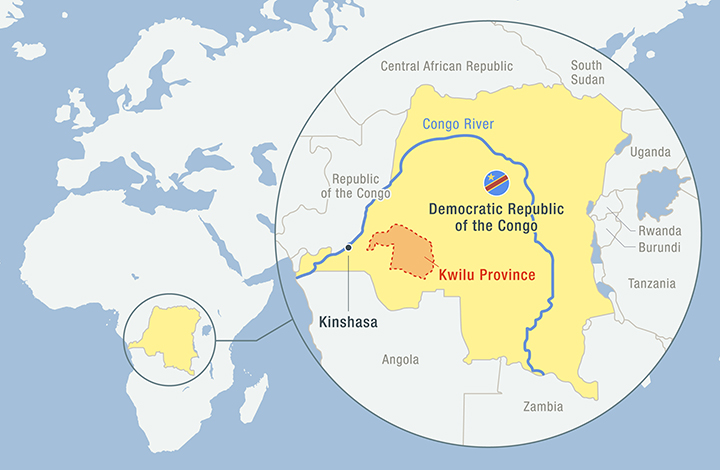
Some 60 percent of the tropical forests of the Congo Basin are located in the DRC. Since 2012, JICA has been involved in a technical cooperation project that includes strengthening the national forest resources monitoring system in order to protect the tropical forests in the Congo Basin. The results have been highly praised by the Ministry of Environment and Sustainable Development of the DRC and other relevant aid agencies and international organizations, and a new forest conservation pilot project got underway in 2019, focusing on Kwilu Province in the western part of the country.
This project is being carried out in cooperation with the Central African Forest Initiative (CAFI). CAFI investors include Norway, Germany, France, the UK and other countries, and the United Nations Development Program (UNDP) serves as the Secretariat. Cooperation with other countries under the framework of CAFI is vital for this project, according to Kurimoto Masaru of the JICA Global Environment Department. “The area of the DRC is so vast that it rivals the size of Western Europe, so Japan’s actions alone are not sufficient to stop deforestation,” he says. “We need to continue to cooperate with other countries, while also continuing dialogue with the government of the DRC.”
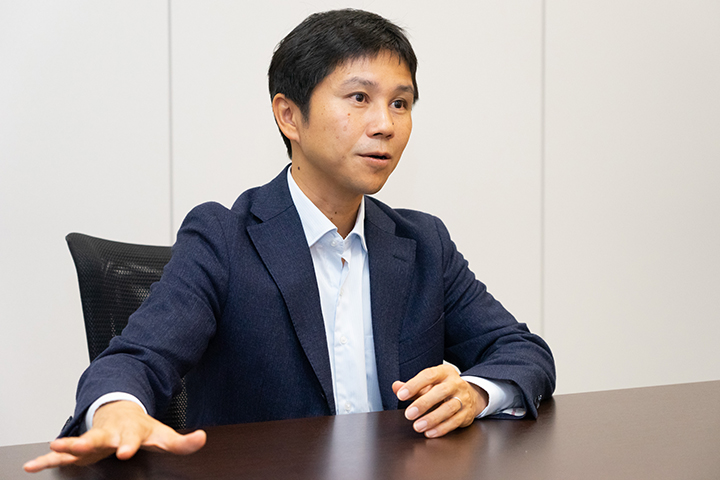
Kurimoto Masaru, Director of the Natural Environment Team 2, Forestry and Nature Conservation Group of the JICA Global Environment Department. After first getting involved in Central Africa in 2013, through JICA’s Africa Department, he was assigned to the JICA DRC office in 2017. He has been involved for many years in the nature conservation issues of the Congo Basin.
Kwilu Province, where this project is taking place, is similar in size and population density to Japan’s Hokkaido Prefecture. It is adjacent to the capital of Kinshasa, which has a population of 10 million people. Even in Kinshasa the electricity infrastructure is still not well developed, so there is a lot of pressure to use the province’s forests as a source for firewood and charcoal for cooking. It has been confirmed that the forests here decreased by an annual average of 7,870 ha between 2010 and 2014.
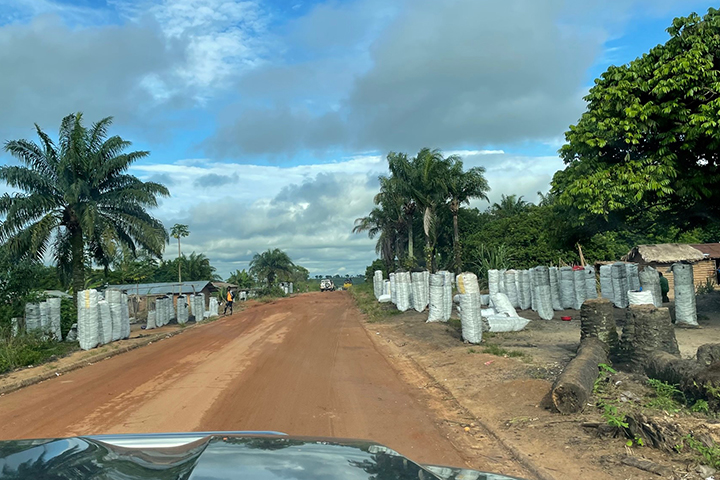
Bags of firewood and charcoal are lined up along the main road in Kwilu Province. Most of these will be transported to Kinshasa.
This project’s purpose is to plant forest trees and cultivate crops using agroforestry practices in 250 villages throughout the province. Fast-growing acacias that can reach heights taller than a person in only two years, as well as fruit trees, such as mango and avocado, are being planted along with indigenous species. Eventually, these will result in a sustainable supply of firewood, charcoal, and fruit. The same land is also being used to grow crops of local, everyday foods, such as cassava, corn, and peanuts.
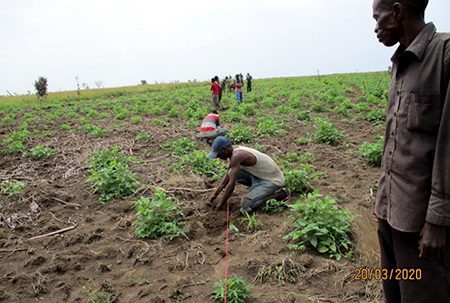
Cassava, corn, and cereals are being planted between acacia saplings. Acacia has a nitrogen fixing effect that enriches the soil.
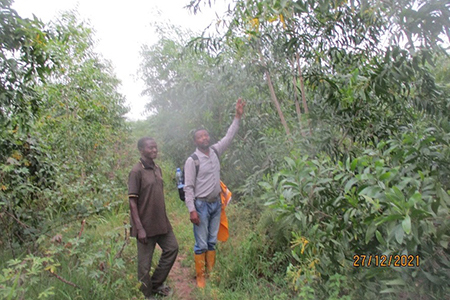
Two years after planting the saplings, the trees are over two or three meters tall and have reached forest height.
JICA’s Kurimoto explains how the decision-making authority in creating these agroforestry forests (such as the mapping of tree planting and crop cultivation locations as well as decisions on the types of crops) is left in the hands of the villagers. “We are only able to carry out these sustainable forest conservation activities because the villagers are satisfied and act on their own,” he says.
The project is being promoted as part of an international initiative called REDD+. REDD+ is a climate change countermeasure that provides economic incentives to developing countries that suppress deforestation as well as the degradation of forests and achieve reductions in greenhouse gas emissions. It evaluates forest conservation efforts at the national and sub-national (provincial) levels over a long-term period. It is expected that increasing the awareness of forest conservation during these activities will lead to a reduction of carbon emissions, the conservation of biodiversity, and improved livelihoods for the community.
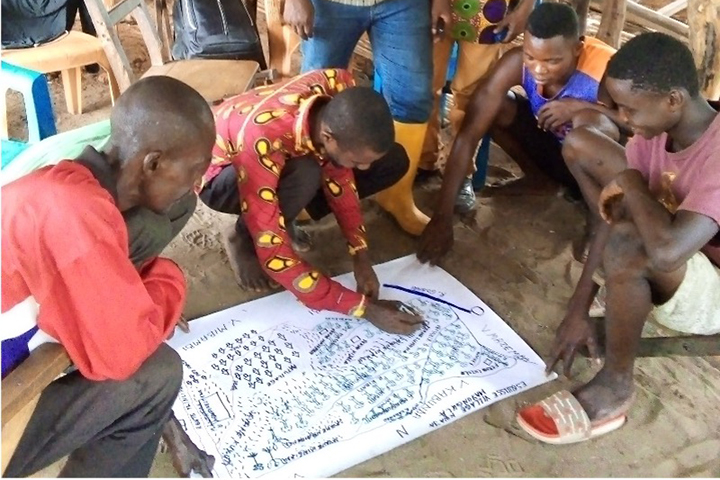
Villagers mapping the area, planning how the land will be used. The villagers work out how to conserve the village’s forests.
In the four years since the start of the project, agroforestry has been developed on 3,960 ha, about 80 percent of the target area in Kwilu Province. Forests in villages that need conservation have also been identified, and conservation rules formulated. In a 2022 mid-term review of the project, Fonds National REDD (FONAREDD), the supervisory body for CAFI-funded projects, had high praise for JICA’s “approach of respecting the ownership and courteous communication of local communities.”
The project will continue with its approach of respecting the ownership of villages while conducting activities aimed at implementing agroforestry in an area over 5,000 ha. Even after the project ends, it is hoped that sustainable forest management will continue, using the skills and knowledge cultivated within these communities.
Kurimoto says, “I would like to further enhance the promotion of ownership and cooperation of the local community, the Kwilu Province government, and the Ministry of Environment and Sustainable Development of the DRC, thereby supporting efforts to ensure that Congolese forests can be passed on to future generations.”
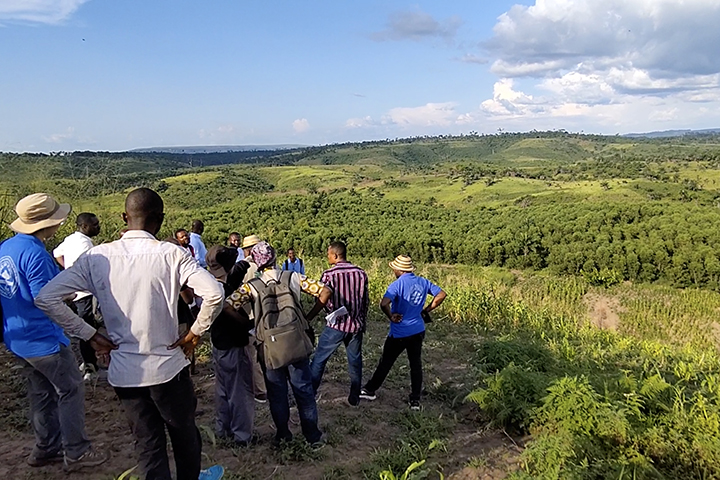
Forest grown by agroforestry (Kimbedi Village, Kwilu Province).
Climate change poses a threat to every country in the world. Many developing countries are not able to take sufficient measures to mitigate or avoid the expected impact from climate change, which will likely have major repercussions on their societies and economies. It is necessary for the entire international community to take measures, so JICA is engaged in mitigation measures such as reducing greenhouse gas emissions in its development projects, and adaptation measures to avoid and reduce the impact of climate change. Forest conservation efforts, such as this project in the DRC are mitigation measures.
“Japan is surrounded by the natural environment of mountains, forests, and the ocean,” says JICA’s Kurimoto. “While this has made us sensitive to seasonal changes, we are also constantly facing natural disasters. Japan has developed a unique relationship with nature over its long history, even making nature an object of worship, as seen in the expression ‘yao yorozu no kami (countless gods in nature).’ I think that this enables Japan to make a positive contribution to conserving the world’s natural environment, and I feel that the world expects us to play this role.”
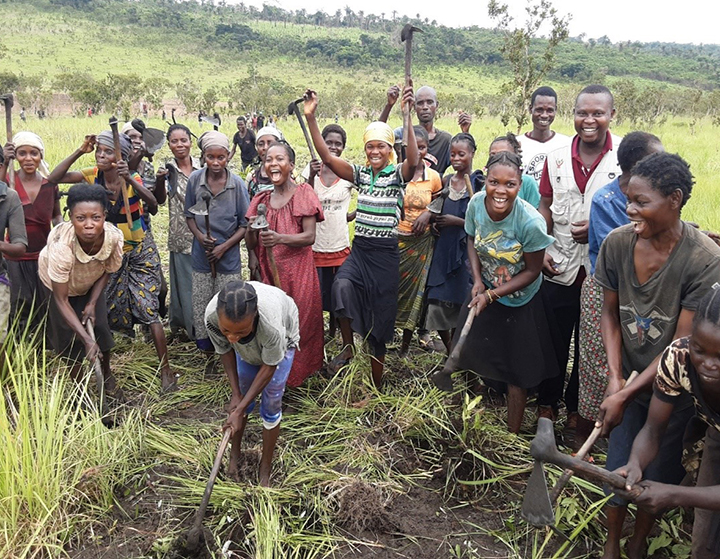
Agroforestry preparation work by village women.
scroll